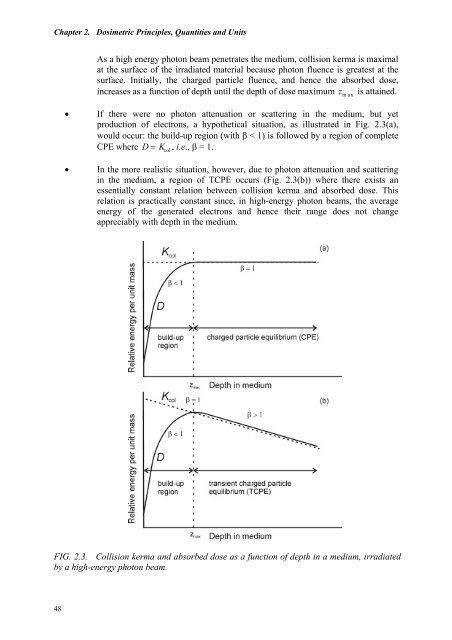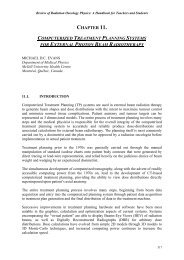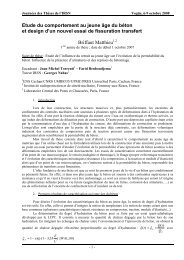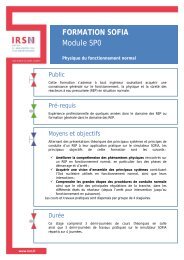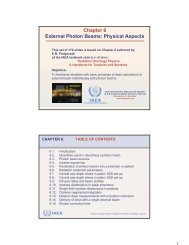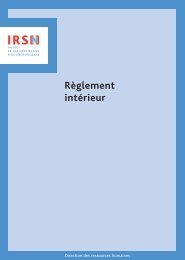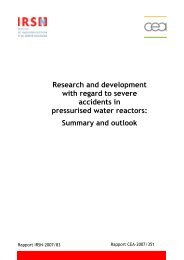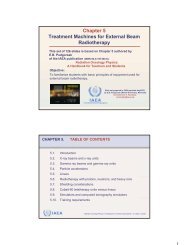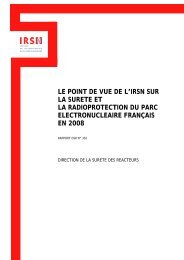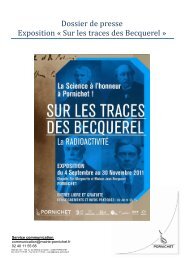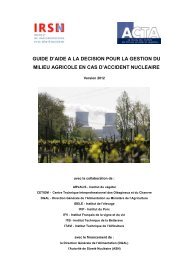chapter 2. dosimetric principles, quantities and units - IRSN
chapter 2. dosimetric principles, quantities and units - IRSN
chapter 2. dosimetric principles, quantities and units - IRSN
Create successful ePaper yourself
Turn your PDF publications into a flip-book with our unique Google optimized e-Paper software.
Chapter <strong>2.</strong> Dosimetric Principles, Quantities <strong>and</strong> UnitsAs a high energy photon beam penetrates the medium, collision kerma is maximalat the surface of the irradiated material because photon fluence is greatest at thesurface. Initially, the charged particle fluence, <strong>and</strong> hence the absorbed dose,increases as a function of depth until the depth of dose maximum z m axis attained.• If there were no photon attenuation or scattering in the medium, but yetproduction of electrons, a hypothetical situation, as illustrated in Fig. <strong>2.</strong>3(a),would occur: the build-up region (with β < 1) is followed by a region of completeCPE where D = K col, i.e., β = 1.• In the more realistic situation, however, due to photon attenuation <strong>and</strong> scatteringin the medium, a region of TCPE occurs (Fig. <strong>2.</strong>3(b)) where there exists anessentially constant relation between collision kerma <strong>and</strong> absorbed dose. Thisrelation is practically constant since, in high-energy photon beams, the averageenergy of the generated electrons <strong>and</strong> hence their range does not changeappreciably with depth in the medium.FIG. <strong>2.</strong>3. Collision kerma <strong>and</strong> absorbed dose as a function of depth in a medium, irradiatedby a high-energy photon beam.48


